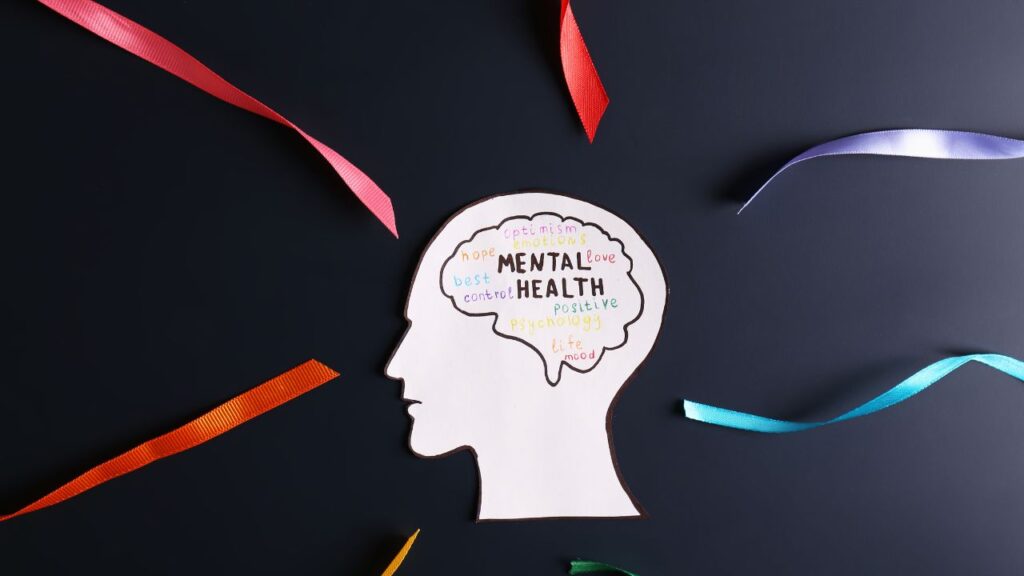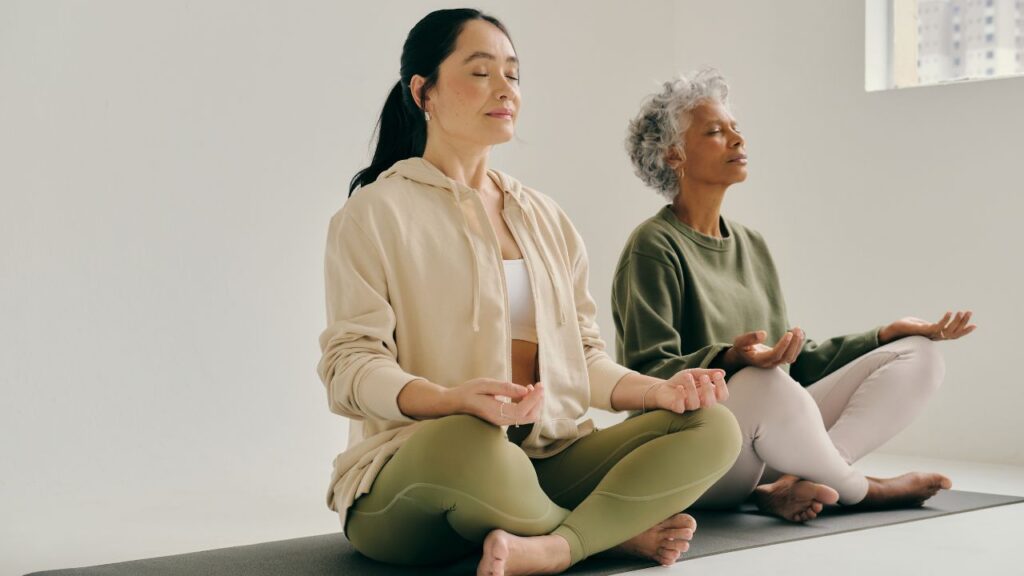Anxiety is one of the most common mental health challenges faced by people around the world today. Whether it manifests as excessive worrying, feelings of restlessness, or even physical symptoms like a racing heart, anxiety can be deeply disruptive to one’s quality of life. Fortunately, mindfulness and meditation have emerged as effective practices for managing anxiety and fostering a sense of calm. In this article, we’ll explore how these ancient techniques work, their benefits, and practical ways to incorporate them into your daily life.

Understanding Anxiety
Before delving into mindfulness and meditation, it’s essential to understand what anxiety is and how it affects the mind and body. Anxiety is a natural response to stress or perceived danger. It’s a mechanism that has helped humans survive by preparing the body for a “fight or flight” response. However, in today’s world, anxiety often arises in response to everyday stressors—work deadlines, social interactions, or financial concerns—leading to chronic distress and physical tension.
Common symptoms of anxiety include:
- Persistent worry or fear
- Difficulty concentrating
- Sleep disturbances
- Irritability
- Muscle tension
- Elevated heart rate
While it’s normal to feel anxious occasionally, chronic anxiety can have a negative impact on both mental and physical health. This is where mindfulness and meditation come into play.
What Is Mindfulness?
Mindfulness is the practice of being fully present and engaged in the moment, without judgment. It involves paying attention to your thoughts, feelings, bodily sensations, and the surrounding environment with an open and curious attitude. The goal of mindfulness is to cultivate a state of awareness where you can observe your experiences objectively, rather than being overwhelmed by them.
The Science Behind Mindfulness and Anxiety Reduction
Research has shown that mindfulness-based practices can be highly effective in reducing symptoms of anxiety. When practiced regularly, mindfulness can help:
- Reduce Overthinking: By bringing awareness to the present moment, mindfulness can help break the cycle of negative thought patterns that contribute to anxiety.
- Lower Stress Hormones: Mindfulness has been shown to reduce levels of cortisol, the stress hormone, and promote a state of relaxation.
- Enhance Emotional Regulation: Mindfulness helps individuals become more aware of their emotions and respond to them in healthier ways.
A study published in JAMA Internal Medicine found that mindfulness meditation programs can significantly reduce symptoms of anxiety, depression, and stress. Another study from the American Psychological Association highlighted that mindfulness practices could help rewire the brain’s neural pathways, making it easier to manage anxious thoughts and emotions.

Introduction to Meditation
Meditation is a broader practice that encompasses various techniques aimed at cultivating a focused and relaxed state of mind. There are many types of meditation, but mindfulness meditation is particularly effective for managing anxiety. In mindfulness meditation, you focus your attention on a single point of reference, such as your breath, bodily sensations, or a specific word or phrase.
How Mindfulness and Meditation Help Manage Anxiety
- Breaking the Cycle of Worry
- Anxiety often involves a repetitive cycle of negative thoughts, known as rumination. Mindfulness meditation helps break this cycle by training the mind to focus on the present rather than getting lost in an endless loop of worries.
- For example, focusing on your breath can anchor you to the present and provide a mental “reset” when anxious thoughts arise.
- Cultivating Awareness and Acceptance
- One of the fundamental principles of mindfulness is acceptance. Instead of fighting or suppressing anxious thoughts, mindfulness teaches you to observe them without judgment. This shift in perspective can reduce the power of anxiety and promote a sense of inner peace.
- Practicing mindfulness can help you recognize early signs of anxiety, allowing you to address it before it escalates.
- Physiological Relaxation Response
- Meditation activates the body’s relaxation response, countering the “fight or flight” stress reaction. Deep breathing and relaxation techniques used in meditation help lower heart rate and blood pressure, promoting physical and mental calm.
Practical Mindfulness and Meditation Techniques for Anxiety
- Mindful Breathing
- How to Practice: Find a quiet place to sit or lie down. Close your eyes and bring your attention to your breath. Notice the sensation of air entering and leaving your nostrils or the rise and fall of your chest. If your mind starts to wander, gently bring your focus back to your breath.
- Benefits: Mindful breathing is a simple yet powerful way to calm the nervous system and reduce anxiety.
- Body Scan Meditation
- How to Practice: Lie down in a comfortable position. Bring your awareness to different parts of your body, starting from your toes and moving up to your head. Notice any areas of tension or discomfort without trying to change anything. Simply observe.
- Benefits: This practice promotes relaxation and can help release physical tension caused by anxiety.
- Loving-Kindness Meditation
- How to Practice: Sit in a comfortable position and close your eyes. Bring to mind someone you care about and silently repeat phrases like, “May you be happy, may you be healthy, may you be free from suffering.” Then, direct these phrases toward yourself and others.
- Benefits: Loving-kindness meditation fosters self-compassion and reduces self-criticism, which can be a significant source of anxiety.
- Five Senses Exercise
- How to Practice: Engage each of your senses one by one. Notice five things you can see, four things you can touch, three things you can hear, two things you can smell, and one thing you can taste. This exercise grounds you in the present moment.
- Benefits: This technique is particularly effective for interrupting anxious thought patterns and bringing awareness to the present.
- Guided Meditation Apps and Resources
- There are many apps, such as Headspace, Calm, and Insight Timer, that offer guided meditations specifically designed for anxiety. These resources can be helpful for beginners who need structure and guidance.
Creating a Consistent Practice
Like any skill, mindfulness and meditation require practice and patience. Here are some tips for building a sustainable practice:
- Start Small: Begin with just 5-10 minutes a day and gradually increase the duration as you become more comfortable.
- Find a Quiet Space: Create a calming environment where you can meditate without distractions.
- Be Patient with Yourself: It’s normal for your mind to wander during meditation. The key is to notice when it happens and gently bring your focus back.
- Incorporate Mindfulness into Daily Activities: You can practice mindfulness during everyday tasks, such as eating, walking, or even washing the dishes. The goal is to remain present and fully engaged in the moment.
Additional Benefits of Mindfulness and Meditation
- Improved Sleep: Many people with anxiety also struggle with sleep disturbances. Mindfulness meditation has been shown to improve sleep quality by calming the mind and promoting relaxation.
- Enhanced Focus and Productivity: Mindfulness helps reduce distractions and enhances the ability to concentrate, making it easier to complete tasks efficiently.
- Better Relationships: By fostering emotional awareness and compassion, mindfulness can improve communication and strengthen relationships.

When to Seek Professional Help
While mindfulness and meditation can be incredibly effective tools for managing anxiety, they may not be sufficient for everyone. If anxiety significantly interferes with your daily life, it’s essential to seek support from a mental health professional. Therapy, medication, or a combination of treatments may be necessary to achieve optimal well-being.
Conclusion: A Journey Toward Inner Peace
Managing anxiety is a journey, and mindfulness and meditation offer powerful tools to help navigate it. By fostering a sense of presence, awareness, and acceptance, these practices can transform your relationship with anxiety and promote a more peaceful and balanced life. Remember, the goal isn’t to eliminate anxiety entirely but to develop the skills to manage it more effectively. With consistent practice and an open mind, you can create a foundation of calm that supports your overall well-being.
Mindfulness and meditation are gifts you can give yourself every day. Take a deep breath, be present, and know that every moment of practice is a step toward a calmer, more centered you.



